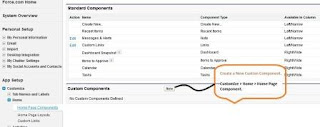API It is used to interact with the System which you have made. For Example: On the Click of Green Button on your phone, A Call Starts, the Key Pad is an Interface(as an API) which is used to interact with the internal system. In Software Terms, It is a method for external system to interact with the software.
Salesforce.com provides us with ability to create programmatic access to our organization's information using API's. Deciding which API to use depends upon the functionality which you would like to achieve and moreover the understanding which you possess about the ability of the respective API. As discussed on this link, you can judge yourself to use the API of your kind.
Library contains a pool of classes whose methods are exposed as API. Salesforce Library provides us with a vast number of classes which we call around to make our life easy. For Example : the System Class contained in the Library is has a number of live saving methods like that of System.debug.
Framework helps developer to build something new.It is underlying code which helps developer to build their own code.Talking in terms of Salesforce.com, We have the Rich GUI based Force.com Platform which does the same for us.A great example to this context would be ASP.net, which is nothing but a collection of libraries,compilers to develop Sites.
Toolkit is a new abstraction layer over library. It often consumes library and allows ease of methods with less error for the developers. Salesforce provides us with delightful Google Data API Toolkit, Facebook Toolkit which makes life more easy.
SDK - Service Development KIT
It is an abstraction layer over the Interface. API can be a sub-set of SDK. It consists of consists of API, Documentations, Compilers, Framework, Sample Code, Utilities which saves time of Developer to create new code from scratch.
If we want to use the functionality which we have made into other Software, we can expose our APIs. If we want the other parties to develop / modify / fix / the existing system for their use we provide SDK. For Example: The Mobile SDK 3.0 provided by Salesforce. It provides the developers/companies to develop applications on the go for Mobile, providing methods and classes which make life easy and not worrying about the mobile coding paradigm. They applications developed over Mobile behave same as the other applications, they get regular updates, push notifications, support of ads etc.



